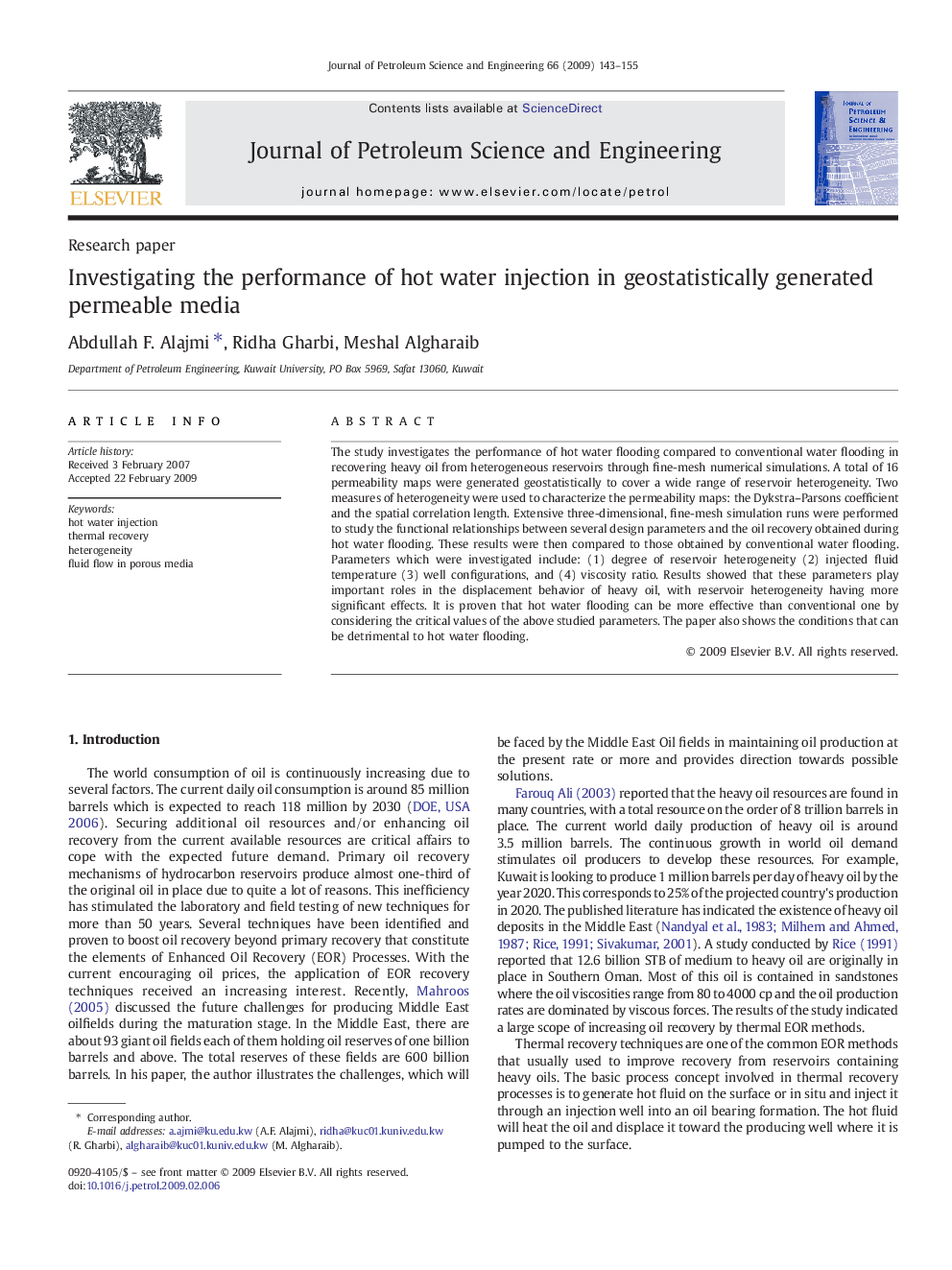| Article ID | Journal | Published Year | Pages | File Type |
|---|---|---|---|---|
| 1756157 | Journal of Petroleum Science and Engineering | 2009 | 13 Pages |
The study investigates the performance of hot water flooding compared to conventional water flooding in recovering heavy oil from heterogeneous reservoirs through fine-mesh numerical simulations. A total of 16 permeability maps were generated geostatistically to cover a wide range of reservoir heterogeneity. Two measures of heterogeneity were used to characterize the permeability maps: the Dykstra–Parsons coefficient and the spatial correlation length. Extensive three-dimensional, fine-mesh simulation runs were performed to study the functional relationships between several design parameters and the oil recovery obtained during hot water flooding. These results were then compared to those obtained by conventional water flooding. Parameters which were investigated include: (1) degree of reservoir heterogeneity (2) injected fluid temperature (3) well configurations, and (4) viscosity ratio. Results showed that these parameters play important roles in the displacement behavior of heavy oil, with reservoir heterogeneity having more significant effects. It is proven that hot water flooding can be more effective than conventional one by considering the critical values of the above studied parameters. The paper also shows the conditions that can be detrimental to hot water flooding.
